Seems like these days more and more people are getting on board with making their yards a bit more wildlife friendly, which of course is a wonderful thing! Woo Hoo, we need more of this! There are plenty of books and articles out there about the value of planting natives, of making small changes to help the wildlife that share our yards. (Like Doug Tallamy’s Nature’s Best Hope)
I bet it would surprise some people to learn that a few of the things they are doing are actually making things worse than better.
It’s hard for all of us to know everything about everything so don’t feel bad if you are guilty of these things. I’m guilty of not maintaining my bee house as I just didn’t know any better and no information came with it when I bought it. Such is the way things work. We learn. Then we make changes.
Are you doing any of these things that actually are WORSE for wildlife, than better? Read on to see if you are guilty of any of these small, but impactful things. Then please help me spread the word to anyone you know. We can all be better stewards of nature and the more we know, the more we’ll be able to do the right thing.
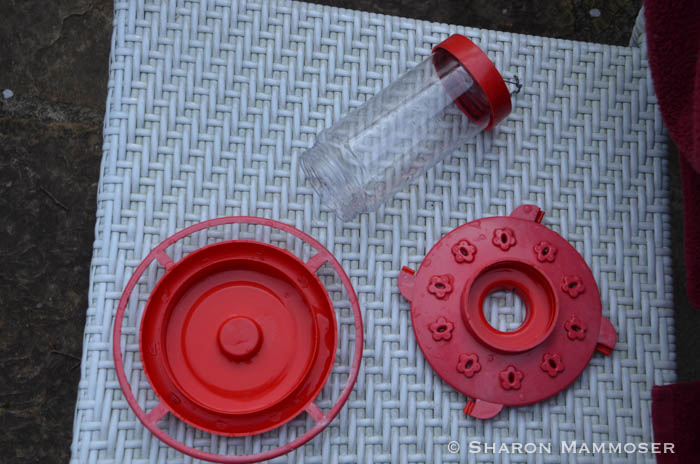
1. Not cleaning your hummingbird feeder REGULARLY If you care enough to put out a hummingbird feeder and you enjoy watching the little birds drinking nectar, you should know that you must dedicate time to cleaning it properly.
Did you know that black mold in the feeders can make the hummingbird’s tongues swell up and effectively starve them to death? Or that mother hummingbirds can pass this along to their babies, effectively starving them to death too? By the time you see the mold, you are already doing harm.
This must be a terrible slow and painful death.This can be 100% avoided if we humans make our actions match our love for the birds. If your schedule is too full to make time to clean out the feeders regularly then please, please, please, just don’t put out the feeders in the first place. The hummingbirds will be just fine without your intervention. It’s better to skip feeding them altogether rather than feeding them nectar in mold-filled feeders. (Clean your feeders with hot water and a small brush or Q-tip or an old tooth brush. The more frequently you do this, the easier it will be. If that isn’t enough you can soak them in vinegar mixed in with some water or a small amount of bleach in a gallon of water. Let them soak for an hour. Then scrub again with a brush. Be sure to rinse WELL and dry before filling.)
2. Using anything other than granulated white sugar in your hummingbird feeders. Are you aware that using raw sugar instead of plain old white granulated sugar can lead to an iron buildup that can kill the birds? And maybe raw sugar is better for humans (up for debate) but it definitely isn’t better for the small birds whose bodies just can’t handle the increased level of iron in this sugar. Plain white granulated sugar is all you need. Just mix it up yourself– one part sugar to four parts water. No honey, no raw sugar, no red dye. None of that is needed. Just plain white sugar and water.
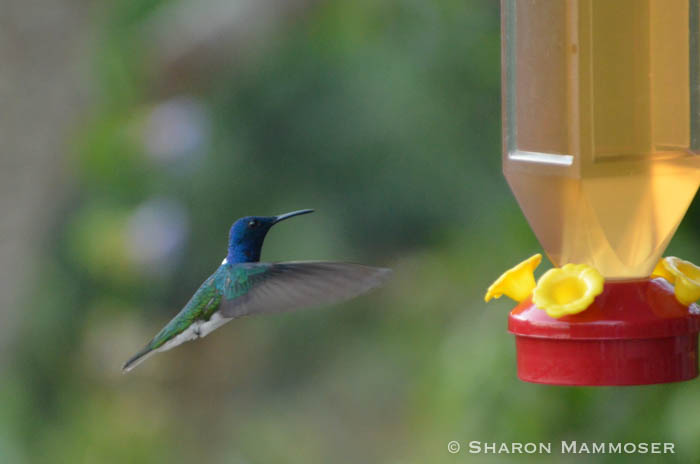
3. Many people want to plant a butterfly garden, or want to attract pollinators to their yards. This is fabulous! But unfortunately for them they sometimes buy their flowers at places that treat with Neonicotinoids (sometimes shortened to neonics.) Often times those sale plants or cheap plants you spot at your local grocery or home repair store have been treated with neonics. There are many articles and much research done about the effects of neonics on honeybees and other insects. Without writing a book here, I can just say it’s not good as according to Xerces Society (The Xerces Society is a science-based nonprofit organization that protects wildlife through the conservation of invertebrates and their habitats.) these chemicals not only are found in the pollen and the nectar, but also persist in the soil, sometimes for years, and if that isn’t bad enough, they can also be taken up by neighboring plants. So that Saliva or Bee Balm you bought at the big box store that was super cheap? Well it may have been treated with neonics and will just poison the bees and other insects that visit it. You probably won’t see the results of your actions but that doesn’t mean you shouldn’t care.
So what’s a gardener to do? ASK questions! Ask the nursery if their flowers have been treated with Neonicotinoids. Sometimes they will be marked, but not always. The best thing to do is ASK, and then, if the answer is yes, DON’T BUY YOUR FLOWERS THERE! Instead shop at the Mom and Pop nursery down the road that raised their own flowers and can answer the question with certainty. In the end it’s worth it to the bees, butterflies and other insects who will visit your yard and garden. Isn’t it worth a few more pennies knowing your plants are safe for the wildlife that will visit them?
Locally here in western NC I personally shop at Reems Creek Nursery in Weaverville or Raymonds Garden Center in Hendersonville because both of these can tell me with certainty that their flowers have not been treated with these chemicals. If you care enough to plant a pollinator garden it seems like choosing chemical free plants is an essential step.
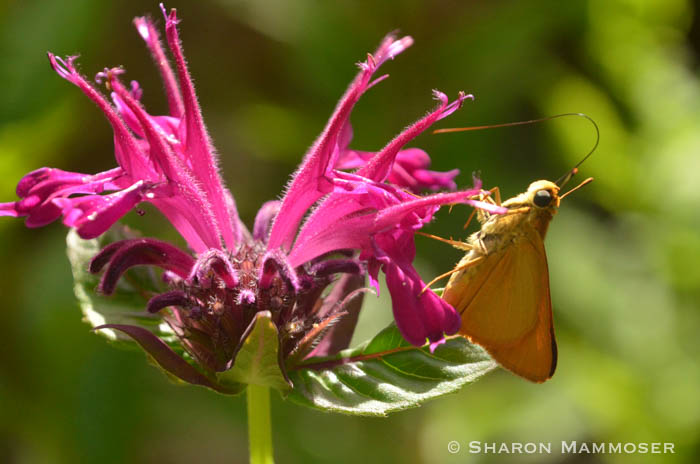
4 Leaving outdoor lights on all night. If you care about wildlife and want to make your yard a safe-haven for all kinds of animals, leaving the lights on all the time is not the way to go. Did you know light pollution greatly affects the behavior of all kinds of animals, from moths, to fireflies to bats and others? And that it even affects plants like flowers and trees that are near the lights? Animals are attracted to the lights and for some like moths this is a death trap. Or they exhaust themselves circling around the light when they should be feeding. Or in the case of fireflies, the light prevents them from finding mates. The list goes on. The solution? Put your outdoor lights on a sensor so they just come on something triggers them, not all the time. It’s a win win–you pay less and wildlife benefits.
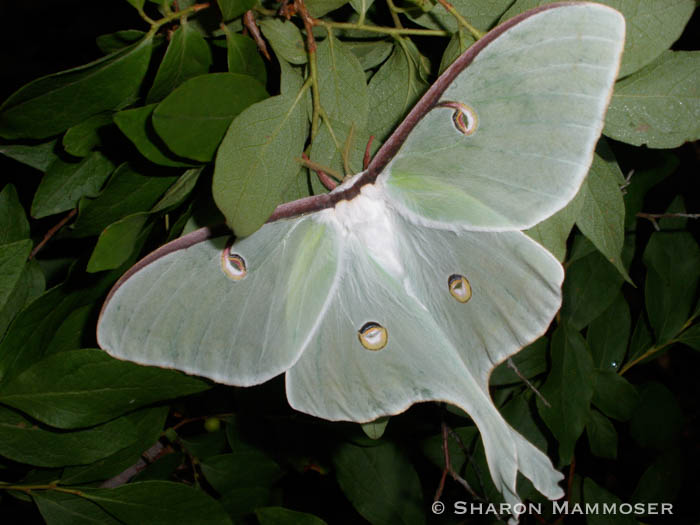
5. You know those mason bee houses that garden centers sell? The ones with the roofs above a bunch of hollow straws or stems? Did you know that you need to replace those hollow stems every year? If you just leave the same bee house up forever what you are essentially doing is inviting bees to the house of horrors where death is pretty much a guarantee? That’s because according to Xerces.org “when not properly maintained these structures become a sponge for pathogens and mites which build up in the nesting material over time. If choosing to design and build or purchase a man-made bee hotel, just be aware it’s not a “set it and forget it” proposition.” To learn more about these bee houses visit the Xerces site or BeeBuilt.com
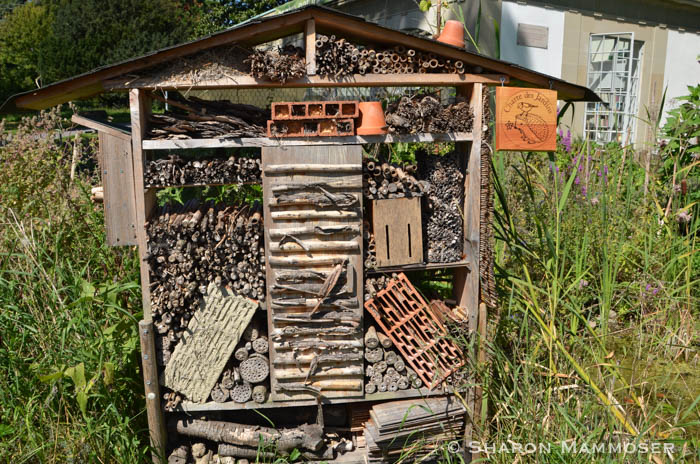
In addition, many of the houses that you see in stores have hollow tubes that are too short for the bees to really use. To be helpful they need to be at least 6 inches long.
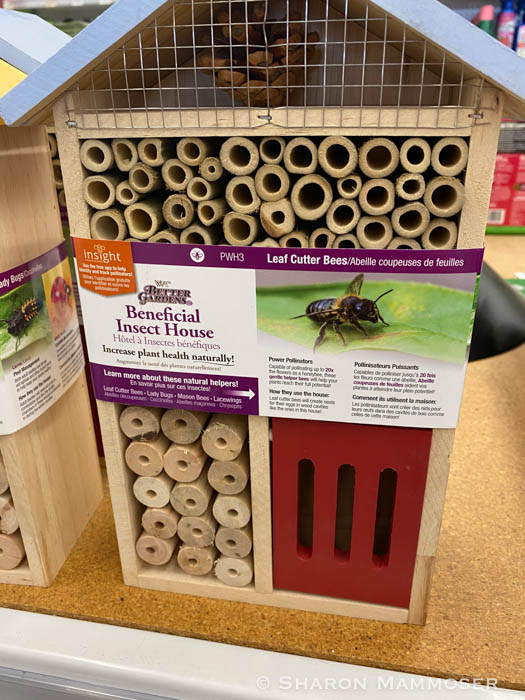

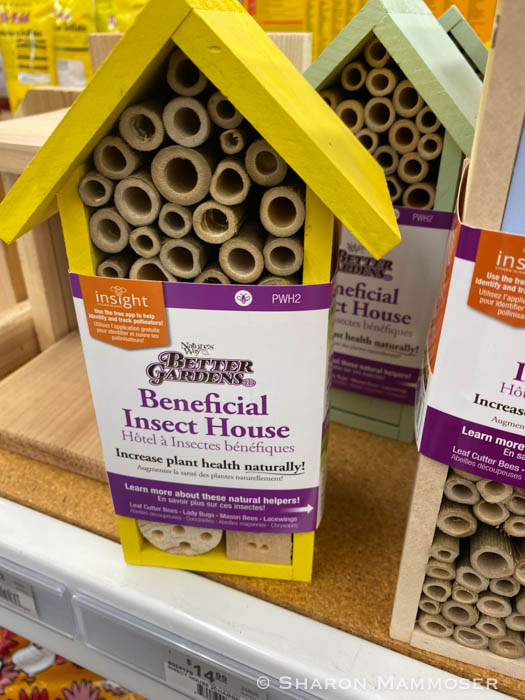
I will write a post in the near future about some things you can do to make your own bee homes or to create yards that have natural areas that the bees can use.
Thanks for reading and for caring about nature. Together we can help spread the word, as the more people who know these things, the better off the wildlife we share our yards with will be.



I’m glad you are spreading the word. You can add Nandina bushes (available at your local nursery) to the list. If eaten in quantity, the berries are poisonous to birds.
Yes, true. Thanks for adding this. Maybe a post for a future date.
Hi, Sharon, I think this is the most needed information on promoting wildlife you have written.
I wonder if it is possible to make bee houses from some nontoxic material that is less inviting to fungus, mites and other deleterious creepy crawlers, etc. and easier to maintain/clean.
I read in ‘Into The Nest: Intimate Views Of The Courting, Parenting, And FAMILY LIVES OF FAMILIAR BIRDS’ by Erickson and Read the 3 prerequisites for maintaining hummingbirds on one’s property are sapsuckers, flowers used by h-birds, and a healthy population of spiders to produce webbing to make expandable nests. Not possible for me anymore, unfortunately.
Thanks Murray for your input. I could do a lot more like this as there is no shortage of things to talk about like invasive plants, using pesticides, putting wildlife in jars and on and on. I just need to make time. Wishing you a few moments of beauty today Murray, however small and unnoticed by the masses they may be.
THANKS SO MUCH SHARON!! Really appreciate your wonderful information that is so helpful and educational to nature lovers and critters.
Thanks for the feedback, Helen. I only wish I could multiply the people reached by several thousand! Oh well, gotta start somewhere.